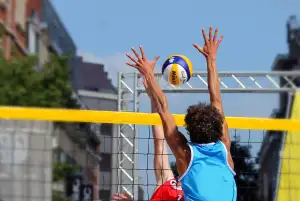Master Your Swing: Boost Golf Ball Contact with These Essential Drills

- Importance of Improving Contact with the Golf Ball
- Drill 1: Grip and Stance Alignment
- Drill 2: Swing Path and Clubface Control
- Drill 3: Tempo and Timing Exercises
- Drill 4: Weight Transfer and Balance Drills
- Drill 5: Visualization Techniques for Better Ball Contact
- Common Mistakes to Avoid
- Benefits of Regularly Practicing Golf Ball Contact Drills
Improving your contact with the golf ball is crucial for enhancing your game and achieving better results on the course. Golf ball contact drills are designed to help you develop a consistent and solid strike, leading to increased accuracy, distance, and control. By focusing on specific aspects of your swing, these drills can address common issues that affect ball contact, such as grip alignment, swing path, timing, weight transfer, and balance. In this article, we will explore essential drills that can help you master your swing and improve your contact with the golf ball.
Importance of Improving Contact with the Golf Ball
Improving contact with the golf ball is crucial for any golfer looking to enhance their game. The quality of ball contact directly affects the distance, accuracy, and control of your shots. When you make solid contact, the ball will travel further and fly straighter towards your intended target. On the other hand, poor contact can result in mishits, slices, hooks, or even completely missed shots. By focusing on improving your ball contact, you can significantly improve your overall performance on the golf course.
Drill 1: Grip and Stance Alignment
One of the fundamental aspects of improving golf ball contact is having a proper grip and stance alignment. This drill focuses on ensuring that you have the correct grip and stance to maximize your swing efficiency.
To start, make sure your grip is firm but not too tight. Place your hands on the club with your left hand (for right-handed golfers) slightly rotated to the right, and your right hand placed comfortably over it. Your thumbs should be pointing down the shaft.
Next, check your stance alignment. Stand parallel to the target line with your feet shoulder-width apart. Align your toes, knees, hips, and shoulders parallel to the target line as well.
Once you have established the correct grip and stance alignment, practice swinging with this setup. Start with slow swings and gradually increase your speed while maintaining control. Focus on feeling the connection between your hands and the club throughout the swing.
Regularly practicing this drill will help you develop muscle memory for a consistent grip and stance alignment, leading to better contact with the golf ball.
Drill 2: Swing Path and Clubface Control
One of the key factors in achieving solid golf ball contact is having a proper swing path and clubface control. This drill focuses on improving these aspects of your game.
To start, set up a line of golf balls on the driving range. Take your normal stance and grip, ensuring they are aligned correctly. Place an alignment stick or club on the ground parallel to your target line.
Now, focus on swinging the club along the correct path. Start with slow swings, making sure the clubhead stays on the target side of the alignment stick throughout the swing. This will help you develop a consistent and accurate swing path.
Next, pay attention to your clubface control. Practice keeping the face square to the target throughout the swing. A common mistake is opening or closing the clubface at impact, resulting in poor ball contact.
To improve clubface control, try using impact tape or foot spray on your clubface. This will provide visual feedback on where you are striking the ball and help you make adjustments accordingly.
As you progress with this drill, gradually increase your swing speed while maintaining proper swing path and clubface control. Remember to always prioritize accuracy over distance during practice sessions.
By regularly practicing this drill, you will develop a more consistent swing path and better control over your clubface. This will lead to improved ball contact and ultimately enhance your overall performance on the golf course.
Drill 3: Tempo and Timing Exercises
Tempo and timing are crucial aspects of a successful golf swing. Without proper tempo and timing, your contact with the golf ball will suffer. Fortunately, there are several exercises you can incorporate into your practice routine to improve these essential elements.
One effective exercise is the metronome drill. Set a metronome to a slow tempo and practice swinging in sync with the beats. Start with half swings and gradually increase the length of your swing as you become more comfortable. This drill helps develop a consistent rhythm and ensures that your swing is properly timed.
Another helpful exercise is the pause-and-go drill. Take your normal setup position, but pause for a few seconds at the top of your backswing before completing the downswing. This pause allows you to focus on maintaining proper sequencing and timing in your swing.
Additionally, incorporating a "one-two" count into your swing can also improve tempo and timing. As you start your backswing, count "one," then transition smoothly into the downswing on "two." This counting technique helps synchronize your movements and promotes better contact with the golf ball.
Remember, consistency is key when it comes to tempo and timing exercises. Practice these drills regularly to develop muscle memory and enhance your overall performance on the course. By mastering tempo and timing, you'll be well on your way to improving contact with the golf ball and achieving greater accuracy in your shots.
Drill 4: Weight Transfer and Balance Drills
One crucial aspect of improving golf ball contact is mastering weight transfer and balance. These drills focus on developing the proper weight shift during your swing, ensuring that you maintain stability and control throughout.
Start by standing with your feet shoulder-width apart and distribute your weight evenly between both feet. As you initiate your backswing, gradually transfer your weight to your back foot while maintaining a stable lower body.
Next, as you begin your downswing, smoothly shift your weight from your back foot to your front foot, allowing for maximum power and control at impact. Practice this movement repeatedly until it becomes second nature.
To further enhance balance, try standing on one leg while swinging the club. This drill will challenge your stability and force you to engage core muscles for better balance throughout the swing.
Remember, proper weight transfer and balance are essential for consistent ball contact. Incorporate these drills into your practice routine to improve overall performance on the course.
Drill 5: Visualization Techniques for Better Ball Contact
Visualization is a powerful tool that can greatly improve your golf ball contact. By mentally picturing the perfect shot, you can enhance your focus and increase your chances of making solid contact with the ball.
To practice this technique, find a quiet spot on the course or at the driving range. Close your eyes and imagine yourself standing over the ball, with a clear picture of the target in your mind. Visualize every detail of your swing, from the grip to the follow-through.
As you visualize, try to feel the sensations of a well-executed shot. Imagine the smoothness of your swing, the sound of club meeting ball, and the flight of the ball towards its intended target. This mental rehearsal will help program your mind and body for success.
You can also use visualization during actual shots on the course. Before each shot, take a moment to visualize yourself hitting a perfect shot. See it happening in your mind's eye before stepping up to address the ball. This will help you stay focused and confident as you execute your swing.
Remember, visualization is not just about seeing; it's about feeling and experiencing success in advance. By incorporating this drill into your practice routine, you'll develop better ball contact and improve overall performance on the golf course.
Common Mistakes to Avoid
1. Gripping the club too tightly: Many golfers make the mistake of gripping the club too tightly, which can restrict their wrist movement and result in poor ball contact. It's important to maintain a relaxed grip to allow for a smooth and natural swing.
2. Incorrect alignment: Improper alignment can lead to inconsistent ball contact. Make sure your feet, hips, and shoulders are aligned parallel to the target line. This will help ensure that your swing path is on target and improve your chances of making solid contact with the ball.
3. Over-swinging: Trying to generate more power by over-swinging often leads to loss of control and poor contact with the ball. Focus on maintaining a smooth and controlled swing rather than trying to hit the ball as hard as possible.
4. Poor weight transfer: Failing to transfer your weight properly during the swing can result in weak ball contact. Practice drills that emphasize proper weight transfer from backswing to downswing to improve your consistency and power.
5. Lack of focus and concentration: Golf is a mental game, and lack of focus can lead to inconsistent ball contact. Stay fully present during each shot, visualize your desired outcome, and concentrate on making clean contact with the ball.
By avoiding these common mistakes, you'll be able to improve your golf ball contact and enhance your overall game performance.
Benefits of Regularly Practicing Golf Ball Contact Drills
Regularly practicing golf ball contact drills offers a multitude of benefits. Firstly, it helps to improve consistency in your swing, leading to more accurate shots. By focusing on grip, stance alignment, swing path, and clubface control, you can develop a repeatable motion that produces solid contact with the ball. This consistency translates into better distance control and shot shaping abilities.
Secondly, these drills enhance your overall ball-striking skills. By honing in on the fundamentals of the swing, such as tempo, timing, weight transfer, and balance, you can achieve a more efficient and powerful strike. This results in increased distance off the tee and improved accuracy with irons.
Furthermore, regularly practicing these drills improves your confidence on the course. When you consistently make solid contact with the ball during practice sessions, it instills a sense of trust in your abilities during real rounds. This mental boost can lead to better decision-making and execution under pressure.
Lastly, incorporating visualization techniques into your practice routine enhances your ability to visualize successful shots before executing them. This mental imagery helps to reinforce proper technique and increases focus during actual play.
In conclusion, regularly practicing golf ball contact drills not only improves consistency and accuracy but also enhances overall ball-striking skills and boosts confidence on the course. Incorporating these drills into your practice routine will undoubtedly enhance your game and lead to better results on the golf course.
Improving your contact with the golf ball is crucial for taking your game to the next level. By incorporating these essential drills into your practice routine, you can master your swing and achieve better ball contact.
Remember to start with Drill 1, focusing on grip and stance alignment. This will provide a solid foundation for a consistent swing. Move on to Drill 2, where you'll work on swing path and clubface control, ensuring that you're striking the ball square.
Drill 3 will help you develop proper tempo and timing, allowing for a smooth and efficient swing. Next, focus on Drill 4 to improve weight transfer and balance, which are key components of a powerful swing.
Finally, utilize visualization techniques from Drill 5 to enhance your mental game and visualize successful shots. Avoid common mistakes along the way, such as poor grip or rushing through your swing.
By regularly practicing these drills, you'll experience numerous benefits. Your accuracy and distance will improve significantly, leading to lower scores on the course. Additionally, you'll gain confidence in your ability to consistently make solid contact with the golf ball.
So don't neglect the importance of effective contact drills in your training regimen. Take the time to master each drill and watch as your game reaches new heights. With dedication and practice, you'll become a more skilled golfer with improved ball contact that translates into better performance on the course.
Published: 05. 01. 2024
Category: sports


